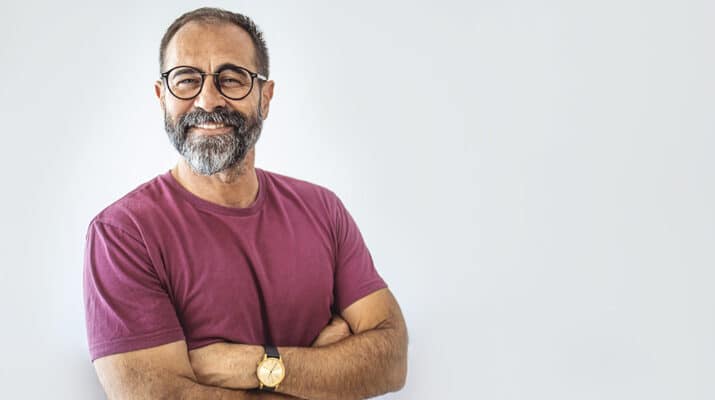Can tech advance longevity? Bestselling author thinks tech is the answer — and plans to award $101 million to the best ideas
By Deborah Jeanne Sergeant
 In late November, Peter Diamandis announced a new XPRIZE competition, his $101 million worldwide event for pioneering technology that promotes healthy longevity.
In late November, Peter Diamandis announced a new XPRIZE competition, his $101 million worldwide event for pioneering technology that promotes healthy longevity.
Diamandis is the founder of the XPRIZE Foundation of Culver City, California. The organization creates supports technological, environmental and health advances through competitions, among other efforts.
Diamandis hopes to attract doctors, researchers, technology experts and more to develop verifiable means to roll back the clock by a decade in areas like muscle mass, immune function and cognitive ability for people aged 65 to 80 within a year. Judges of the competition will perform assessments on participants to rank the contestants’ results. The competition is sponsored by Hevolution, a nonprofit organization investing in aging research.
“The team has got to deliver a minimum of a 10-year restoration of function with a target of 20 years,” Diamandis told Fortune. “We’re talking about the potential for therapeutics to have a massive impact on humanity.”
The goal is not just longevity, but healthy longevity, in which those benefiting from the technology can stay active and enjoy their extra decade or two.
Although the XPRIZE may succeed in finding such helpful technology, improving the chances of healthy longevity is available now.
“I’m sure there is science out there that will continue to advance for life span to increase,” said Jill Murphy, certified personal trainer and co-owner of Mission Fitness in Syracuse. “Genetic testing is a great way to stay ahead of the curb, which I think they mentioned in the article they may be using. There is some genetic testing out there now, which can be very beneficial as well. Knowing your epigenetics allows you to be more proactive with your health.”
By knowing present risks for diseases, people can choose to focus their time and resources on preventing them.
Another key to healthy longevity is staying connected with others. During the pandemic, older adults became particularly isolated because of factors such as retirement status, increased emphasis on social distancing because of their elevated COVID-19 risk and termination of many programs designed for older adults such as congregant meal sites, life enrichment classes and 60-plus exercise programs. Many of these programs were in part managed by retiree volunteers who have not returned to volunteering.
“We find as major issue social isolation,” said Sara Sunday, services administrator with Oswego County Office for the Aging. “It has so many negative health effects on older adults if they’re not getting out in the community and not seeing people. Like any other depressive health condition, it has a negative impact on their health. It’s not only people who live by themselves out in the country. You can be socially isolated in an apartment building if you’re not getting out.”
Along with connection often comes greater physical activity and more cognitive activity, both of which are beneficial.
The Office for the Aging is using technology to meet some of these needs, such as connecting older adults with animatronic pets for people who can no longer care for a real pet. Or placing AI units in private homes.
“It’s not an Alexa, but it gains information with every interaction with the person, like if they usually get up at 8 and then get up at 9, it will ask how they slept,” Sunday said. “Or if the person puts in that they have a doctor’s appointment, it will remind them of the appointment and that it’s cold out and remind them to bundle up. Or prompt them to play a trivia game or listen to music.”
While not the same as a human-to-human conversation, interacting with a machine that can learn does provide some mental stimulation that is not as passive as watching television.
Sunday said that for older adults who have internet access, the virtual senior center offers a means to interact with others and they also attend classes such as virtual chair yoga. Encouraging more movement is essential, as regular physical activity is also key to healthy longevity. Kerri Howell, certified personal trainer and owner of The Hourglass Mom in the Rochester area, recommends preserving muscle strength.
“More muscle means fewer falls, more strength and mobility,” she said.
It also contributes to performing activities of daily living, such as cleaning the house, shopping for groceries and cooking. These become harder with less muscle.
“Falls among older adults have been identified as a strong indicator of shortened lifespans,” said Ann E. Cunningham, executive director at Oasis Rochester. “They contribute to bone fractures, which lead to deconditioning and greater susceptibility to illness.”
She noted a recent advisory from the US Surgeon General, which called attention to the public health crisis of loneliness, isolation and lack of connection with others.
“He stated that lack of connection can be as detrimental to our health as smoking daily,” Cunningham said.
She added that by engaging with organizations like Oasis Rochester, which provide opportunities in lifelong learning, health and wellness, “we can build strong interpersonal connections, remain active and engaged and continue learning and growing.”

